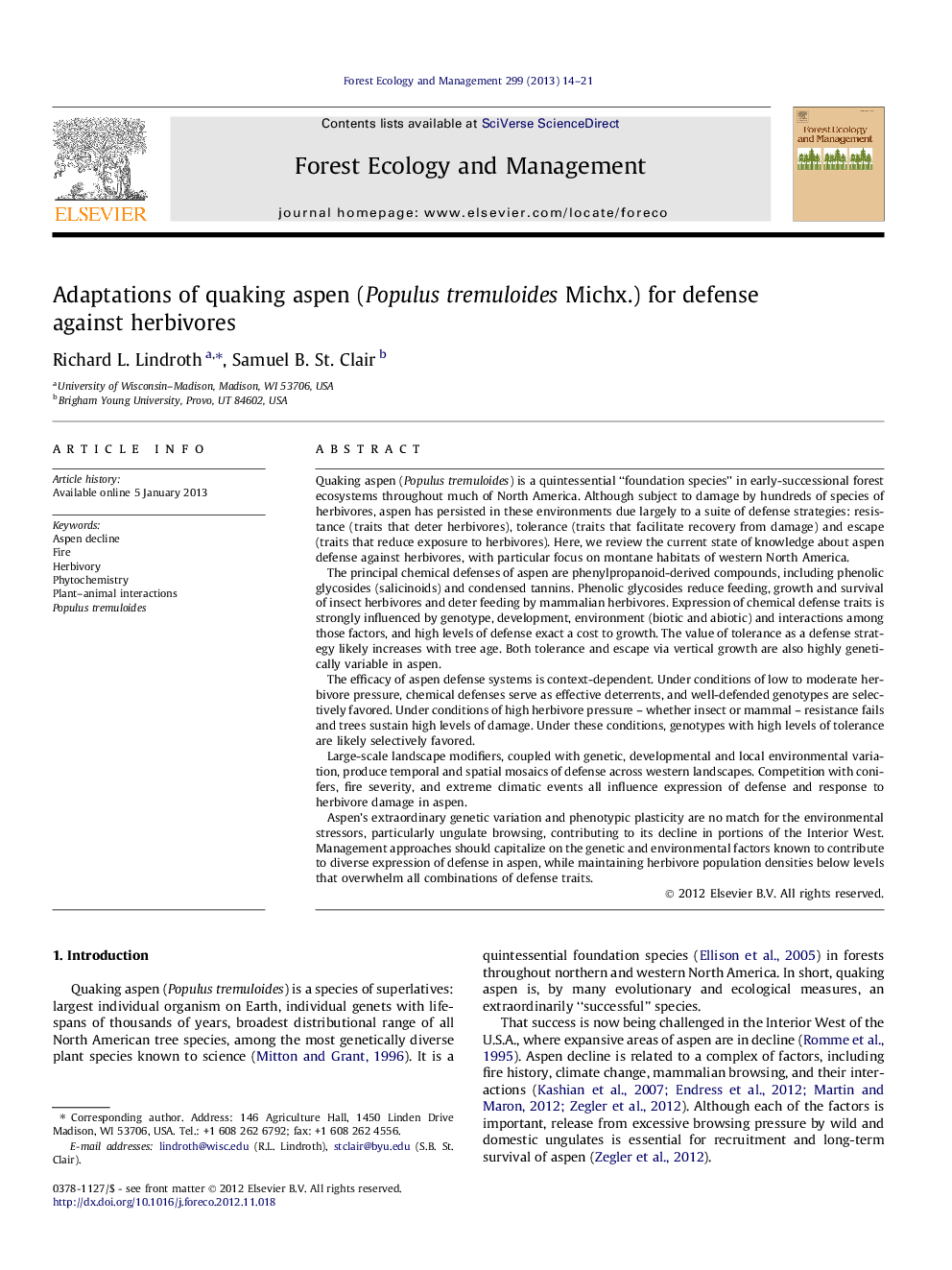| کد مقاله | کد نشریه | سال انتشار | مقاله انگلیسی | نسخه تمام متن |
|---|---|---|---|---|
| 86952 | 159225 | 2013 | 8 صفحه PDF | دانلود رایگان |

Quaking aspen (Populus tremuloides) is a quintessential “foundation species” in early-successional forest ecosystems throughout much of North America. Although subject to damage by hundreds of species of herbivores, aspen has persisted in these environments due largely to a suite of defense strategies: resistance (traits that deter herbivores), tolerance (traits that facilitate recovery from damage) and escape (traits that reduce exposure to herbivores). Here, we review the current state of knowledge about aspen defense against herbivores, with particular focus on montane habitats of western North America.The principal chemical defenses of aspen are phenylpropanoid-derived compounds, including phenolic glycosides (salicinoids) and condensed tannins. Phenolic glycosides reduce feeding, growth and survival of insect herbivores and deter feeding by mammalian herbivores. Expression of chemical defense traits is strongly influenced by genotype, development, environment (biotic and abiotic) and interactions among those factors, and high levels of defense exact a cost to growth. The value of tolerance as a defense strategy likely increases with tree age. Both tolerance and escape via vertical growth are also highly genetically variable in aspen.The efficacy of aspen defense systems is context-dependent. Under conditions of low to moderate herbivore pressure, chemical defenses serve as effective deterrents, and well-defended genotypes are selectively favored. Under conditions of high herbivore pressure – whether insect or mammal – resistance fails and trees sustain high levels of damage. Under these conditions, genotypes with high levels of tolerance are likely selectively favored.Large-scale landscape modifiers, coupled with genetic, developmental and local environmental variation, produce temporal and spatial mosaics of defense across western landscapes. Competition with conifers, fire severity, and extreme climatic events all influence expression of defense and response to herbivore damage in aspen.Aspen’s extraordinary genetic variation and phenotypic plasticity are no match for the environmental stressors, particularly ungulate browsing, contributing to its decline in portions of the Interior West. Management approaches should capitalize on the genetic and environmental factors known to contribute to diverse expression of defense in aspen, while maintaining herbivore population densities below levels that overwhelm all combinations of defense traits.
► Much of the ecological and evolutionary success of aspen is due to strategies it employs for protection from herbivory.
► Expression of chemical defense is determined by genetics, development, environment, and interactions among those factors.
► Defenses can be overwhelmed by high population densities of both insect and mammalian herbivores.
► Changing environmental conditions, coupled with high herbivore pressure, can compromise aspen defenses.
► Management practices should promote diverse expression of defense traits and control for herbivore population levels.
Journal: Forest Ecology and Management - Volume 299, 1 July 2013, Pages 14–21